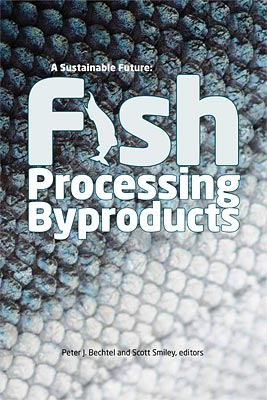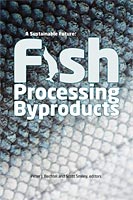
Bioactivities found in sardine (Sardinops sagax caerulea) byproduct hydrolysates
J.C. Ramirez-Suarez, R. Pacheco-Aguilar, E. Ponce-Alquicira, M.E. Lugo-Sánchez, A. Villalobos-Rodríguez, and I.G. Ortíz-Delgado
- Price: $1.50
 This is part of A Sustainable Future: Fish Processing Byproducts
This is part of A Sustainable Future: Fish Processing Byproducts| Format | Price | |
|---|---|---|
| PDF download [320.8 KB] | $1.50 | Add to Cart |
Description
The sardine canning industry uses approximately 40-45% of the sardine body, leaving the rest (heads, viscera, and tails) as processing byproducts that are subjected to reduction. However, these byproducts have high protein content that can be used to produce bioactive peptides. The objective was to produce bioactive peptides through the autolysis of sardine (Sardinops sagax caerulea) processing byproducts. Hydrolysis conditions of the homogenate at different pH, temperature, and reaction times were monitored by measuring absorbance at 540 nm (Biuret reaction) and tricine SDS-PAGE (sodium dodecyl sulfate polyacrylamide gel electrophoresis). The autolytic generation of low molecular weight (<30 kDa) peptides was best at the pH 8.5, 37ºC and 45 min reaction time, and physiological pH (6.5) was used as a control. Fractions (<1, 1-5, 5-10, 10-30 kDa) were collected by ultrafiltration. Antihypertensive (inhibition of angiotensin-converting enzyme [ACE] and by IC50), antimicrobial (well diffusion assay), and antioxidant bioactivity (TBARS) of fractions were evaluated. Fractions of 1-5 kDa (pH 8.5) and <1 kDa (physiological pH) gave the highest ACE inhibition values of 68.4 and 62.9%, respectively. Fractions that gave the lowest IC50 values were the <1 and 1-5 kDa (physiological pH), with 0.48 and 0.81 mg per ml, respectively. Only the 10-30 kDa fraction (physiological pH) showed microorganism inhibition. However, the nature of the inhibition remains to be elucidated. All fractions showed antioxidant activity. Sardine processing byproducts can be used to obtain bioactive peptides without using commercial enzymes.
Item details
- Item number: AK-SG-10-02x
- Year: 2010
- DOI: https://doi.org/10.4027/sffpb.2010.24



